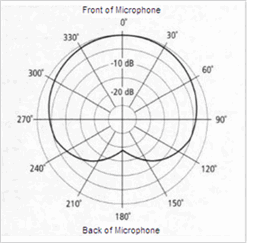Polar Charts
The Chart.Polar element produces a circular graph in which data is displayed in terms of values and angles. Also known as a "radar chart", this is an X-Y graph drawn on a circular grid, displaying value trends on the basis of angles.
The following topics introduce the Chart.Polar element:
The Chart.Polar element has been deprecated; it's still supported and will work, but its elements are no longer available in Studio. Instead, use Chart Canvas Chart and set its Polar attribute for all new development.
About Polar Charts
In a traditional line chart values are plotted along the X and Yaxes, with their positions designated by the familiar Cartesian, or horizontal and vertical, coordinates.
In a polar chart, data points are plotted using "polar" rather than Cartesian coordinates. In a polar chart, the X-axis value is used to set the angle, based on the values around the perimeter of the chart, in degrees. The Y-axis value is plotted along a radius, with 0 at the center of the chart.
A slight style variation provides the "radar" or "spider" chart, which connects its tick marks with straight, rather than curved, lines yielding a spider web-like appearance.
Multiple data sets can be plotted simultaneously as layers, with transparency helping users to "see through" overlapping areas. This allows quick comparison and assessment of data.

Polar charts are often very useful for present data that uses a natural cycle such as daily temperatures or annual rainfall. They're also frequently used in scientific and mathematic applications.
Consider the polar chart at the left. It shows the "sound pick-up pattern" for a particular type of microphone. The black line inside the chart plots how well the microphone picks up sound.
As you can see, the microphone is very good at collecting your voice if you stand directly in front of it.
As you move around to the side of the microphone, though, the sound pick-up capability starts to diminish and, if you stand at the back of the microphone, it's quite poor.
Which is good, as this is what the microphone was designed to do; on a stage with other musicians and with an audience out front, this microphone will focus fairly exclusively on a singer's voice. And the polar chart shows this quite clearly.